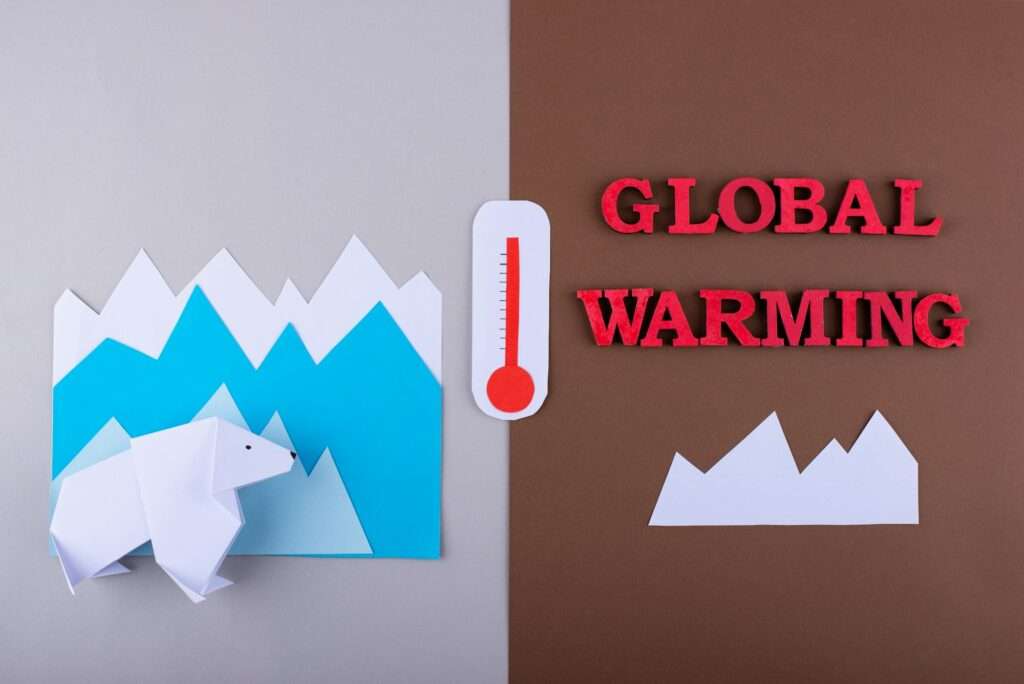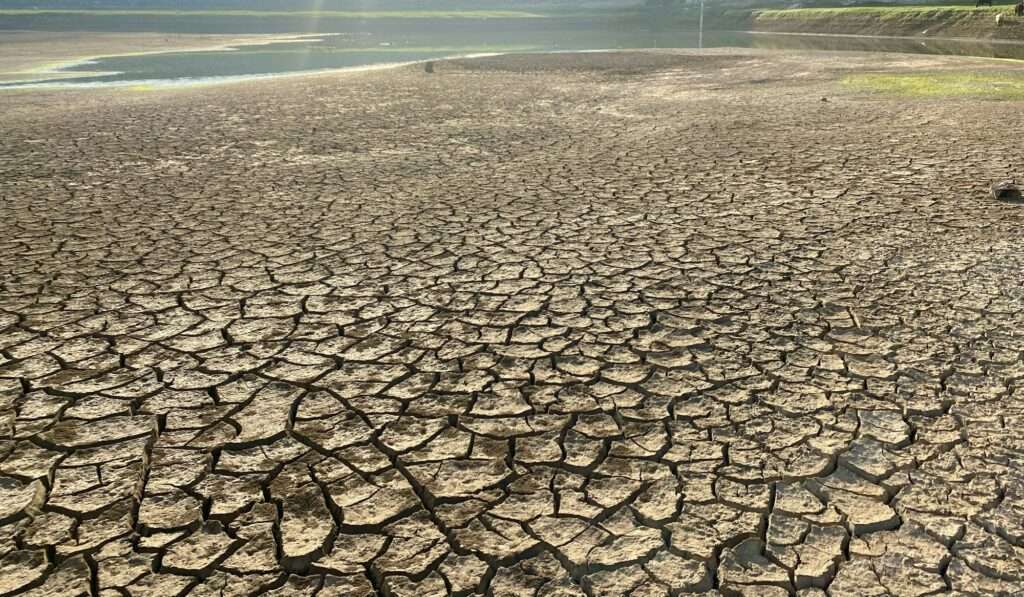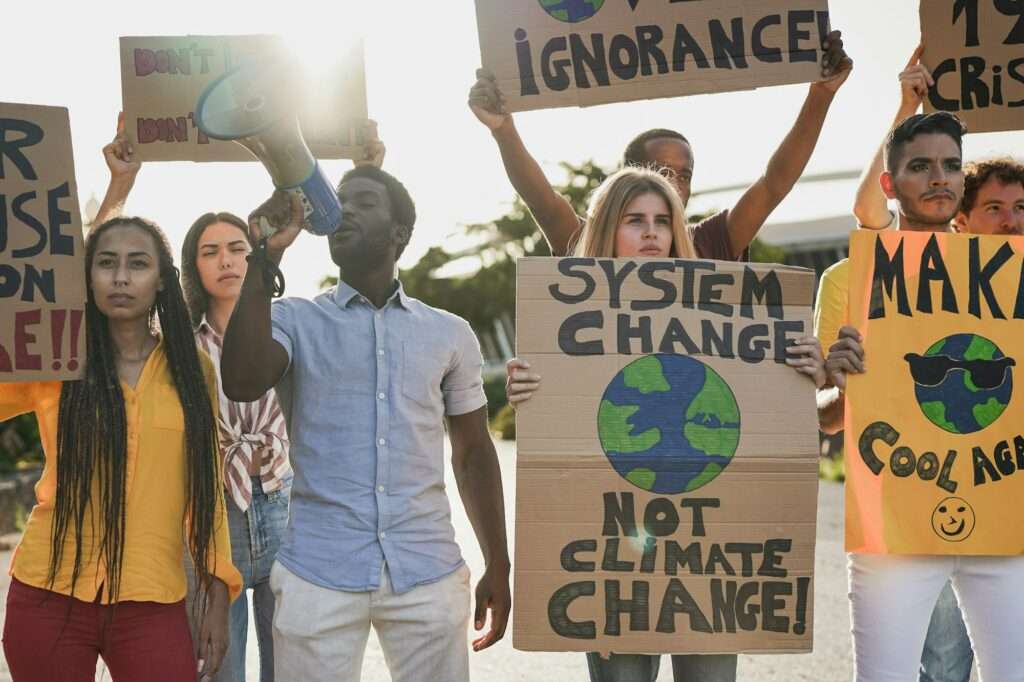The looming climate crisis stands as the paramount challenge threatening our global economy, society, and environment. Over the past two decades, instances of climate-related disasters have nearly doubled, exacerbating disparities both within and among nations. Ironically, those who contribute the least to global emissions often bear the brunt of its consequences.
We find ourselves at a critical juncture where climate change undermines the very fabric of achieving the 2030 Agenda for Sustainable Development, including the Sendai Framework for Disaster Risk Reduction. As it unfolds, climate change reshapes the distribution of vital resources like water, arable land, and energy, catalyzing migration, displacement, and social unrest. Transitioning toward a sustainable, net-zero carbon world demands swift, systemic transformations, particularly within key sectors such as energy, food production, and healthcare.
Table of Contents
Aligned with other pivotal agreements under the 2030 Agenda, including the Paris Agreement on Climate Change and the Addis Ababa Action Agenda on Financing for Development, the Sendai Framework operates in tandem with these initiatives and ultimately the Sustainable Development Goals. Endorsed by the UN General Assembly subsequent to the 2015 Third UN World Conference on Disaster Risk Reduction (WCDRR), the Sendai Framework advocates for substantial reductions in disaster risk and losses across various dimensions of human life and the environment. It underscores the primary role of the state in mitigating disaster risks while emphasizing the shared responsibility among local governments, the private sector, and other stakeholders.
Succeeding the Hyogo Framework for Action (HFA) 2005-2015, which aimed to bolster the resilience of nations and communities to disasters, the Sendai Framework emerged from extensive stakeholder consultations beginning in March 2012. Intergovernmental negotiations held from July 2014 to March 2015, facilitated by the UNDRR at the behest of the UN General Assembly, culminated in its adoption.
Seven Global Targets of Sendai Framework
To support the assessment of global progress in achieving the outcome and goal of the Sendai Framework, seven global targets have been agreed:
- Substantially reduce global disaster mortality by 2030, aiming to lower average per 100,000 global mortality between 2020 and 2030 compared to 2005–2015;
- Substantially reduce the number of affected people globally by 2030, aiming to lower the average global figure per 100,000 between 2020 and 2030 compared to 2005–2015;
- Reduce direct disaster economic loss in relation to global gross domestic product by 2030;
- Substantially reduce disaster damage to critical infrastructure and disruption of basic services, among them health and educational facilities, including through developing their resilience by 2030;
- Substantially increase the number of countries with national and local disaster risk reduction strategies by 2020;
- Substantially enhance international cooperation to developing countries through adequate and sustainable support to complement their national actions for implementation of the framework by 2030;
- Substantially increase the availability of and access to multi-hazard early warning systems and disaster risk information and assessments to the people by 2030.
The United Nations Office for Disaster Risk Reduction (UNDRR) is tasked with supporting the implementation, follow-up, and review of the Sendai Framework. To adhere to the safer 1.5-degree limit set forth in the Paris Agreement, collective action, political leadership, and adequate financing are imperative. However, prudent risk management necessitates preparation for a spectrum of negative outcomes associated with varying degrees of warming, including unforeseen concurrent threats like the ongoing COVID-19 crisis.
The profound damage and repercussions stemming from extreme events within a changing climate not only impede the achievement of sustainable development goals but also undermine hard-earned developmental strides of the past. This article evaluates the significant impacts and obstacles posed by disaster and climate change risks on sustainable development while summarizing the evolution and interconnections of disaster risk reduction (DRR), climate change adaptation (CCA), and sustainable development over the last three decades.
Also read: Regenerative Agriculture In An Era Of Climate Change
The conceptual evolution of DRR initiatives has transitioned through three distinct phases: disaster management in the 1990s, risk management in the 2000s, and resilient management and development in the 2010s. Concurrently, CCA measures have been widely adopted to mitigate the adverse effects of climate change. Transforming governance mechanisms at various levels is crucial to integrating CCA and DRR, thereby reducing disaster and climate change risks to foster secure growth and resilience in the Anthropocene era.
However, three major obstacles demand attention. Firstly, there remains a deficiency in scientific and technological capabilities and risk governance mechanisms globally, leading to substantial loss of life and property in large-scale disasters. Secondly, EM-DAT fails to document numerous small-scale but recurrent disasters and indirect losses, concealing the true extent of damage and hindering effective risk modeling. Thirdly, in today’s interconnected world, indirect cascading impacts of disasters pose significant threats to socio-economic development, necessitating enhanced disaster information recording and sharing.

The best estimate indicates a human-induced global surface temperature increase of approximately 1.1°C since 1850–1900, with each successive decade warmer than its predecessor. Without prompt action, global warming could surpass 1.5°C between 2030 and 2052, intensifying risks associated with health, livelihoods, food security, water supply, human security, and economic growth.
Also read: Effects of Global Warming and Climate Change
The Intergovernmental Panel on Climate Change’s Sixth Assessment Report identifies over 130 key risks that may exacerbate under specific climate hazard conditions, emphasizing the critical need for immediate action on urgent issues. Climate-related disasters currently account for over 80% of natural hazard-induced disasters, affecting over 3.3-3.6 billion vulnerable individuals worldwide.
Under higher warming scenarios, the crossing of tipping points poses irreversible changes to ecosystems and climate patterns, severely limiting adaptation capabilities. Moreover, the lack of scientific research on systemic risks induced by climate change in the context of deep uncertainty complicates decision-making processes, potentially resulting in suboptimal outcomes.
While climate change adaptation and DRR share common goals of managing weather and climate-related hazards, their scopes and emphases differ. DRR addresses a broader spectrum of natural hazards beyond climate change, focusing on reducing potential losses of people and assets. Conversely, climate change adaptation emphasizes impacts on ecosystems, biodiversity, infectious diseases, and health, highlighting the need for integrated approaches to manage climate risks effectively.
Climate Change and the Escalating Risks

Climate change is poised to escalate the risk of various natural disasters, including cyclones, droughts, floods, heatwaves, infectious diseases, sea level rise, and wildfires, with profound implications for human populations and ecosystems:
- Cyclones: With under 2.5°C of global warming, projections suggest that the frequency of the most devastating storms could double compared to current levels.
- Droughts: Within less than 80 years, the number of individuals enduring extreme drought conditions worldwide may double, exacerbating water scarcity and agricultural challenges.
- Floods: With each 1°C increase in global temperatures, extreme daily precipitation events could intensify by approximately 7%, heightening the risk of flooding in vulnerable regions.
- Heatwaves: By 2100, heat stress induced by extreme heat and humidity could annually impact a staggering 1.2 billion people, posing significant health risks and strain on infrastructure.
- Infectious diseases: Mosquitoes transmitting vector-borne diseases such as Malaria are projected to extend their reach to an additional 500 million people by 2050, amplifying public health concerns.
- Sea level rise: Coastal flooding events fueled by rising sea levels could jeopardize assets valued at up to 20% of the global GDP by the end of the century, threatening coastal communities and economies.
- Wildfires: By 2030, the wildfire season is expected to lengthen, posing heightened risks to ecosystems, property, and human lives, necessitating enhanced wildfire management strategies and preparedness measures.
The escalating impact of climate change on various natural disasters underscores the urgent need for comprehensive mitigation and adaptation efforts to safeguard vulnerable populations and build resilient communities in the face of a rapidly changing climate.
Addressing Critical Challenges Posed by Climate Change

- Urgent Reassessment of Mitigation Strategies: The current trajectory of mitigation efforts is steering us towards catastrophic levels of disaster risk. Climate change not only escalates the frequency and intensity of hazards but also exacerbates the vulnerability of communities and individuals while straining water and food security. Without significant changes, we could face a temperature surge of 3 degrees Celsius or more. It’s imperative to acknowledge that our existing mitigation endeavors are inadequate. Failure to curb carbon emissions could trigger irreversible consequences, including ecosystem collapse, by breaching critical thresholds.
- Accelerating Investment in Risk-Informed Adaptation: There’s a concerning lag in investment towards adaptation strategies that are informed by risk analysis. Blind planning has the potential to create new vulnerabilities and instances of maladaptation. To address this, we need a profound escalation in adaptation initiatives, coupled with comprehensive risk assessment and management strategies encompassing diverse hazards. Existing risk analytics fall short in enabling proactive measures to mitigate the humanitarian fallout from climate-related disasters.
- Inadequate Management of Long-Term Impacts: Critical climate crisis impacts, such as sea-level rise and ocean acidification, pose global challenges that demand urgent attention in development planning. The failure to integrate risk considerations has impeded effective planning and led to underestimation of the benefits of swift climate action. As extreme weather events surge, the ensuing population displacement, loss of livelihoods, and strain on basic services underscore the necessity for proactive intervention.
- Overhauling Investment and Financial Systems: Our financial systems must recalibrate to accurately assess climate risks and their impact on asset valuation. Underestimating climate risk poses significant concerns for long-term investors and vital sectors like insurance, pension funds, infrastructure, and agriculture.
- Addressing Intersecting Inequalities: Climate change amplifies existing inequalities, creating a vicious cycle of vulnerability and disadvantage. Marginalized communities bear a disproportionate burden of climate-related impacts, limiting their capacity to mitigate risks, adapt, and recover. Tackling climate change necessitates a concerted effort to address systemic inequalities and uplift vulnerable populations.
In confronting these challenges, proactive measures and systemic changes are essential to foster resilience, promote sustainability, and mitigate the far-reaching impacts of climate change on societies worldwide.
Policy Recommendations for Addressing Climate Challenges
- Mobilizing Political Leadership and Momentum: Governments worldwide must prioritize climate action as the foremost public good. It is imperative for the G20 to intensify efforts to reduce greenhouse gas emissions, striving to meet the 1.5-degree target. Disaster risk prevention and reduction should stand at the core of these endeavors. Governments need to revamp policies, plans, and programs to function effectively under varying risk scenarios. Upgrading climate and disaster risk analytics is crucial for better accounting of systemic risks and knock-on impacts. Cost-benefit analyses should incorporate the projected costs of future disaster impacts, emphasizing the sound financial sense of investments in adaptation and disaster risk reduction.
- Scaling up Comprehensive Disaster and Climate Risk Management: Comprehensive risk management must be integrated into development planning across various sectors, including energy, industry, land use, ecology, and urban systems. National Adaptation Plans (NAPs) should incorporate risk-centered approaches, while national and local disaster risk reduction strategies must integrate adaptation and climate information. Improved metrics are urgently required to gauge the erosion of resilience and progress towards Sustainable Development Goals (SDGs) and Sendai Framework targets. Disaster risk management plans should be grounded in both historical disaster trends and future climate projections.
- Empowering Communities and Mobilizing Society: Gender equality and women’s empowerment are pivotal for addressing climate change. Integrating gender analysis into climate change and disaster risk management policies is essential to prevent the exacerbation of inequalities. A new “social contract” on climate change should delineate responsibilities and expectations from governments, cities, the private sector, and other stakeholders.
- Investing in Sustainable, Resilient Infrastructure Systems: Infrastructure planning and design should factor in climate change and potential disasters, ensuring resilience. Services provided by infrastructure systems should also be resilient to climate and disaster-related disruptions. Massive investments are needed for low-carbon infrastructure and retrofitting. Nature-based solutions and sustainable ecosystem management are critical for success.
- Promoting Innovative Investments and Financing Mechanisms: Governments and non-state stakeholders should honor pledges for equitable climate finance distribution. Risk tagging and tracking of budgetary flows enable better measurement of risk reduction approaches. Improved risk understanding informs financing decisions, complemented by enhanced financial regulation and risk disclosure mechanisms. Post-COVID-19 stimulus packages should prioritize greener economic growth and social protection.
- Ensuring Behavioral Change through Science and Effective Communication: Strengthening scientific knowledge and evidence is crucial for informed decision-making. Enhanced communication within communities facilitates better understanding of climate risks and impacts. Impact-based risk information, including early warning systems, fosters actionable insights.
By implementing these policy recommendations, governments and stakeholders can foster resilience, promote sustainability, and mitigate the impacts of climate change on communities and ecosystems globally.


